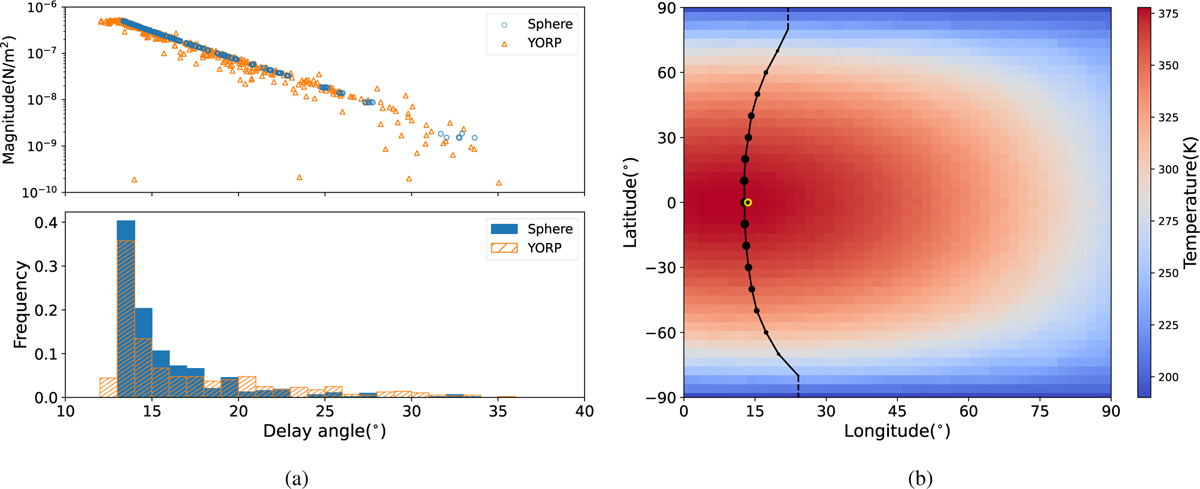Fig. 1

Download original image
Directions and magnitudes of the averaged radiation forces of surface elements on sphere model and YORP model. A thermal conductivity K1 = 0.0015 W m−1 K−1 (correspondingly Θ = 0.736) is adopted for both models. The direction and magnitude have been projected in the orbital (equatorial) plane here (see text). (a) The magnitudes of radiation forces of surface elements versus the delay angle (upper panel), and the frequency of delay angles of all surface elements (lower panel). The delay angle of a surface element is the angle between the radiation force averaged over a rotation period and the corresponding averaged force of the same surface element but with K = 0. Blue and orange indicate the results for sphere and YORP model, respectively. (b) The direction and magnitude of the radiation force at different latitudes on the surface of a sphere. The longitude 0° is at noon. The longitude of the black dot at certain latitude indicates that the radiation force at this latitude points to the direction given by the longitude. The size of black dots represents the magnitude of the radiation force (in N/m2, see text) projected in the orbital plane. The yellow circle indicates the direction and magnitude (F/4πR2) of the total radiation force. The background colour gives the surface temperature.
Current usage metrics show cumulative count of Article Views (full-text article views including HTML views, PDF and ePub downloads, according to the available data) and Abstracts Views on Vision4Press platform.
Data correspond to usage on the plateform after 2015. The current usage metrics is available 48-96 hours after online publication and is updated daily on week days.
Initial download of the metrics may take a while.


